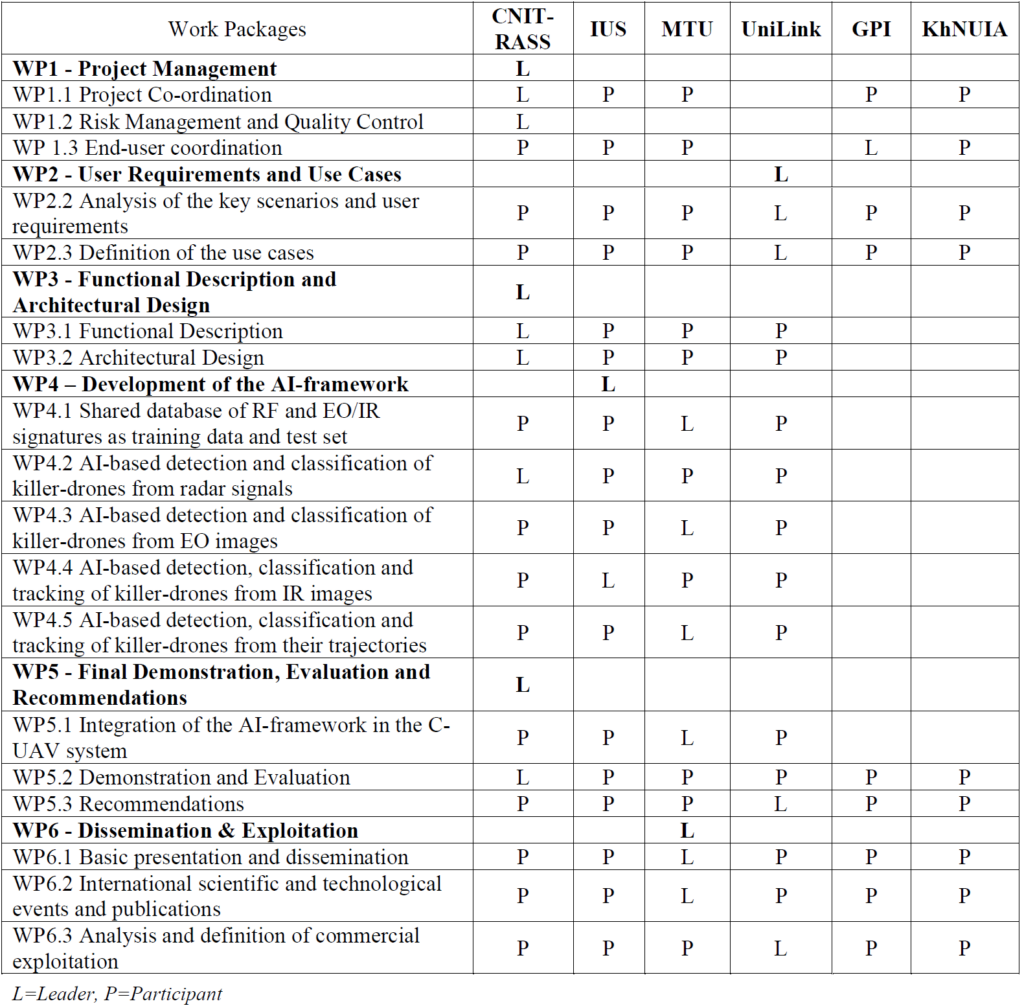Methodology
The project lifecycle is iterative using an agile approach. The work plan is incremental in terms of the deliverables including non-technical ones. The main deliverables will be released in two main iterations, namely beta and final releases and several intermediate ones that are not presented in this proposal (due to size limitations).
The Ai4CUAV project team has devised a work plan structured over 30 months with 6 work packages:
- “WP1 – Project management” aims at providing a structured system for the full administrative and technical coordination of the project, addressing all methods of risk management, quality assurance and confidentiality including IPR handling. WP1 includes also the coordination of the end-users.
- “WP2 – User Requirements and Use Cases” aims at critically reviewing the operational scenarios defined in previous ANTI-DRONES project and identifying the required capabilities to reach identified goals.
- “WP3 – Functional Description and Architectural Design” aims at critically reviewing the previous ANTI-DRONES architecture in order to integrate the AI-framework (WP4).
- “WP4 – Development of the AI-framework” aims at developing the AI-framework for detection and classification of killer-drones from radar signals, EO and IR images, plus drone trajectories.
- “WP5 – Final Demonstration, Evaluation and Recommendations” aims at evaluating and assessing the Ai4CUAV prototypal system in the reference scenarios, as well as at promulgating a set of recommendations as initial contribute to the concept evolution roadmap.
- “WP6 – Dissemination & Exploitation” is aimed at managing and facilitating the dissemination and communication to the scientific community of project results from the scientific and public understanding point of view.
WORK BREAKDOWN STRUCTURE (WBS)


